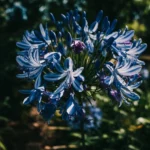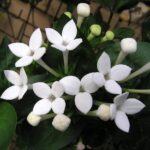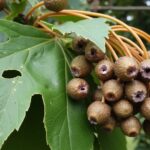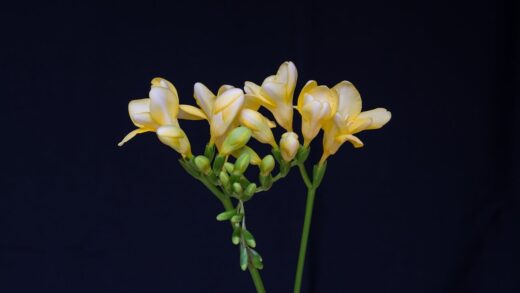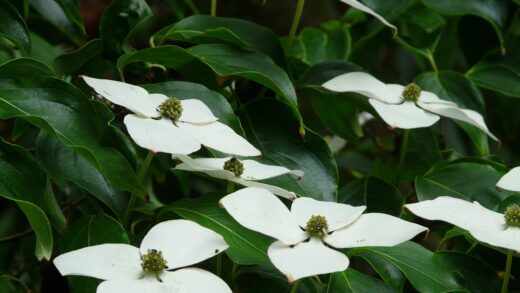One of the most appealing attributes of the Anatolian colchicum for the home gardener is its remarkable resilience and general freedom from the pests and diseases that plague many other ornamental plants. This inherent robustness is largely due to the presence of the toxic alkaloid colchicine throughout all its tissues. This compound renders the plant highly unpalatable and poisonous to most grazing mammals, including common garden nuisances like rabbits, deer, and rodents such as voles and squirrels, which are notorious for devouring other bulbs like tulips and crocuses. This built-in chemical defense system means that gardeners can typically plant colchicum with confidence, knowing it is unlikely to become a meal for vertebrate pests.
This natural protection provides a significant advantage, allowing these plants to be grown without the need for physical barriers, cages, or chemical repellents that are often necessary for other autumn and spring-flowering bulbs. The sight of colchicum flowers emerging untouched in a garden where other plants are frequently browsed can be a source of great relief and satisfaction. This trait makes them an excellent choice for gardens that border wild areas or for gardeners seeking low-maintenance, reliable performers that do not require constant vigilance against animal pests.
However, while they are largely immune to larger pests, they are not completely impervious to all potential problems. Like any plant, under certain environmental conditions or when under stress, they can become susceptible to a small number of specific diseases, primarily fungal in nature, and can occasionally be troubled by invertebrate pests like slugs and snails. Understanding these potential issues, although they are relatively uncommon, allows for proactive monitoring and swift intervention should a problem arise.
The key to preventing most of these problems lies not in chemical treatments, but in providing the plant with its ideal growing conditions from the outset. A plant that is sited correctly in well-draining soil, receives appropriate sunlight, and is not stressed by improper watering is a healthy plant with a strong immune system, far more capable of fending off potential pathogens and pests on its own. Good horticultural practice is, and always will be, the most effective form of pest and disease control.
Fungal and rot issues
The most significant threat to the health of Anatolian colchicum is not a pest, but rather diseases caused by soil-borne fungi, which lead to corm rot. This issue is almost exclusively a result of poor growing conditions, specifically waterlogged soil. When a corm is forced to sit in cold, damp, or warm, stagnant conditions for extended periods, it becomes highly vulnerable to attack from various pathogens, such as those from the Fusarium or Rhizoctonia genera. These fungi invade the corm tissue, causing it to become soft, discolored, and eventually decay completely.
More articles on this topic
The prevention of corm rot is entirely dependent on cultural practices, with soil drainage being the number one priority. Planting in heavy clay soil without adequate amendment is a near guarantee of future problems. Before planting, it is imperative to improve the soil’s structure by incorporating plenty of grit and organic matter to ensure that excess water drains away from the corms swiftly. Planting on a slight slope or in raised beds can also be an effective strategy in gardens with inherently poor drainage.
Overwatering, particularly during the crucial summer dormancy period, is another major contributor to corm rot. It is essential to respect the plant’s natural life cycle and allow the soil to dry out after the leaves have died back. Irrigating the area during the summer to benefit other nearby plants is a common cause of colchicum failure. If a corm does succumb to rot, it should be dug up and disposed of immediately to prevent the fungal pathogens from spreading through the soil to neighboring healthy corms.
Another, less common fungal issue is gray mould (Botrytis cinerea), which can sometimes affect the flowers or leaves during prolonged periods of cool, wet, and humid weather. It typically appears as fuzzy grey or brown patches on the petals or foliage, which can quickly lead to collapse and decay. To prevent gray mould, ensure there is good air circulation around the plants by not overcrowding them. If you spot signs of infection, carefully remove and destroy the affected plant parts to prevent the spores from spreading.
Slugs and snails
While the toxic nature of colchicum deters most pests, slugs and snails can sometimes cause damage, particularly to the emerging flowers and young, tender leaves. These gastropods seem to be less affected by the colchicine, or they may simply cause exploratory damage before moving on. In autumn, they can chew holes in the delicate petals or graze on the flower tubes, spoiling the aesthetic of the floral display. In spring, they may feed on the newly emerging foliage, creating ragged edges and holes in the leaves.
More articles on this topic
The damage is often most severe during mild, damp weather, which provides the ideal conditions for slugs and snails to be active. You are most likely to find them, or their tell-tale silvery slime trails, during the evening or early in the morning. While minor damage is usually just a cosmetic issue, a heavy infestation can be more serious, particularly if they damage the emerging shoots significantly. Vigilance during these high-risk periods is key to keeping them under control.
There are numerous methods for controlling slugs and snails, ranging from physical removal to organic baits. One of the simplest and most effective methods is to patrol the garden at dusk with a flashlight and physically pick them off the plants and the surrounding soil. Creating barriers around the colchicum patch using crushed eggshells, horticultural grit, or copper tape can also be effective, as these surfaces are irritating for the gastropods to crawl over.
For more persistent problems, organic slug pellets containing ferric phosphate can be used. These are considered safe for wildlife, pets, and children when used according to the manufacturer’s instructions, and they are an effective way to reduce the slug and snail population around your valuable plants. Encouraging natural predators like birds, frogs, toads, and ground beetles by creating a wildlife-friendly garden habitat is also a fantastic long-term strategy for keeping gastropod numbers in check.
Other potential invertebrate pests
While far less common than slug and snail issues, a few other invertebrate pests may occasionally trouble Anatolian colchicum, though they rarely cause significant harm. One such pest is the narcissus bulb fly (Merodon equestris), which primarily targets daffodils but has been known to occasionally lay its eggs near other bulbs, including colchicum. The resulting maggot burrows into the corm and feeds on its interior, which can lead to rot and the death of the plant. A corm that fails to produce leaves in spring and feels soft or lightweight may be a victim of this pest.
Control of the narcissus bulb fly is difficult and relies primarily on prevention. The adult fly, which resembles a small bumblebee, is active from late spring to early summer, searching for suitable egg-laying sites near the base of dying bulb foliage. Good garden hygiene, such as promptly removing the withered colchicum leaves once they have fully died back, can help to make the area less attractive to the flies. If you discover an infested corm, it must be dug up and destroyed to prevent the maggot from pupating in the soil and emerging as an adult fly the following year.
Aphids are another generalist pest that can sometimes be found on the spring foliage of colchicum, particularly on the tender new growth. They are small, sap-sucking insects that can cause minor distortion to the leaves and produce a sticky substance called honeydew. In most cases, aphid populations on colchicum are small and are kept in check by natural predators like ladybugs, hoverflies, and lacewings. They rarely cause enough damage to warrant intervention.
If an aphid infestation becomes particularly heavy, a strong jet of water from a hose can be effective at dislodging many of them from the leaves. For more persistent issues, an application of insecticidal soap can be used, ensuring the undersides of the leaves where aphids tend to congregate are thoroughly coated. However, the use of insecticides should always be a last resort, as it can also harm the beneficial insects that are the best long-term solution to aphid control.
Prevention as the best defense
Ultimately, the most effective strategy for dealing with pests and diseases of the Anatolian colchicum is to focus on prevention rather than cure. A healthy, vigorous plant growing in its preferred conditions is far less likely to succumb to problems than a plant that is stressed or weakened. This begins with the very first step of planting: choosing a site with the right amount of light and, most importantly, providing excellent soil drainage to preemptively combat the risk of corm rot.
Good garden sanitation plays a crucial role in preventing the buildup and spread of pathogens. This includes clearing away the dead foliage in early summer after it has completely withered, as this removes potential hiding spots for pests and egg-laying sites for insects like the narcissus bulb fly. When dividing corms, always inspect them for any signs of disease or damage and discard any that appear unhealthy rather than replanting them and potentially introducing problems into a new area.
Promoting biodiversity in your garden is another powerful preventative measure. By cultivating a wide variety of plants, you create a resilient ecosystem that can support a healthy population of beneficial insects, birds, and other animals that act as natural predators for pests like slugs and aphids. Avoiding the broad-spectrum use of pesticides is essential to protect these valuable allies and allow nature to maintain a healthy balance. A garden teeming with life is a healthy garden.
Regular monitoring of your plants allows you to spot any potential issues early before they become major problems. A quick inspection of the flowers in autumn and the leaves in spring can help you catch any signs of slug damage or the beginnings of a fungal issue. Early detection makes control far easier and more effective. By combining these preventative, culture-based strategies, you can ensure your Anatolian colchicums remain healthy and beautiful for many years with minimal trouble.










